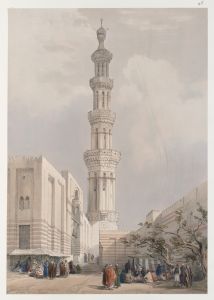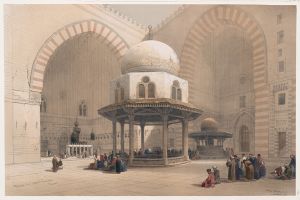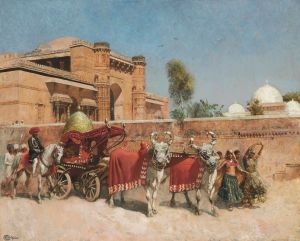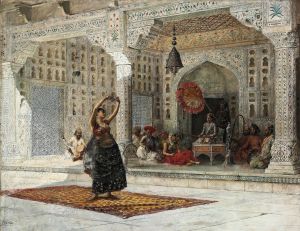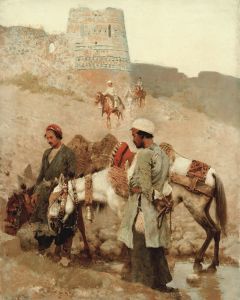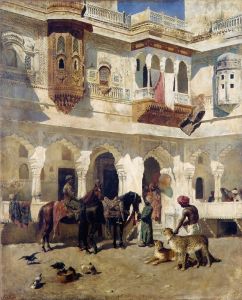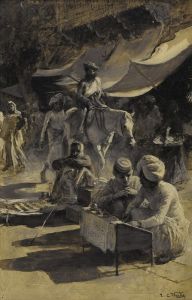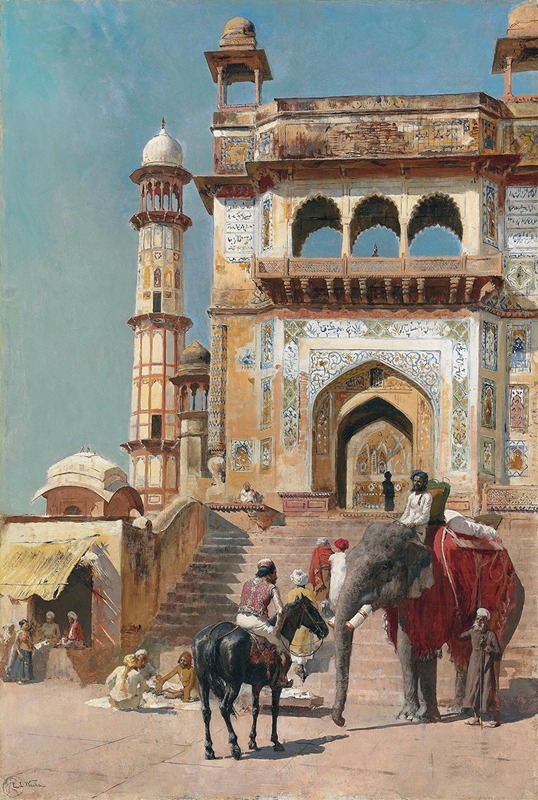
Before the great Jami Masjid mosque, Mathura, India
A hand-painted replica of Edwin Lord Weeks’s masterpiece Before the great Jami Masjid mosque, Mathura, India, meticulously crafted by professional artists to capture the true essence of the original. Each piece is created with museum-quality canvas and rare mineral pigments, carefully painted by experienced artists with delicate brushstrokes and rich, layered colors to perfectly recreate the texture of the original artwork. Unlike machine-printed reproductions, this hand-painted version brings the painting to life, infused with the artist’s emotions and skill in every stroke. Whether for personal collection or home decoration, it instantly elevates the artistic atmosphere of any space.
Edwin Lord Weeks was an American artist known for his Orientalist paintings, which often depicted scenes from his travels in the Middle East, North Africa, and South Asia. One of his notable works is "Before the Great Jami Masjid Mosque, Mathura, India," which captures a vivid scene in front of the Jami Masjid mosque in Mathura, a city in the northern Indian state of Uttar Pradesh.
Edwin Lord Weeks was born in Boston, Massachusetts, in 1849. He developed an early interest in art and travel, which was further fueled by his studies in Paris under the tutelage of renowned artists such as Jean-Léon Gérôme. Weeks became part of the Orientalist movement, a genre that romanticized and depicted the cultures and landscapes of the East as seen through Western eyes. His works are characterized by their attention to detail, vibrant colors, and the ability to capture the essence of the places he visited.
The painting "Before the Great Jami Masjid Mosque, Mathura, India" is a testament to Weeks' skill in portraying architectural grandeur and the daily life surrounding such structures. The Jami Masjid in Mathura is an important religious site, known for its impressive architecture and historical significance. Mathura itself is a city with deep religious roots, being one of the seven cities considered holy by Hindus, and is traditionally recognized as the birthplace of Lord Krishna.
In Weeks' painting, the Jami Masjid is depicted with its towering minarets and intricate architectural details, showcasing the Islamic architectural style that was prevalent during the period. The foreground of the painting is bustling with activity, capturing the essence of daily life in front of the mosque. People are depicted in traditional attire, engaging in various activities, which adds a dynamic element to the composition.
Weeks' ability to blend architectural precision with lively human activity is evident in this work. The painting not only serves as an artistic representation but also as a historical document, offering insights into the cultural and social dynamics of the time. His use of light and shadow enhances the three-dimensionality of the scene, drawing viewers into the vibrant world he portrays.
Throughout his career, Weeks traveled extensively, and his works often reflect the diverse cultures and landscapes he encountered. His paintings are celebrated for their ethnographic detail and artistic merit, and they continue to be appreciated for their historical and cultural significance.
"Before the Great Jami Masjid Mosque, Mathura, India" is a fine example of Weeks' contribution to the Orientalist genre, capturing a moment in time with both artistic flair and cultural sensitivity. His works remain an important part of art history, offering a window into the past and the interactions between Western artists and the Eastern world during the 19th century.







